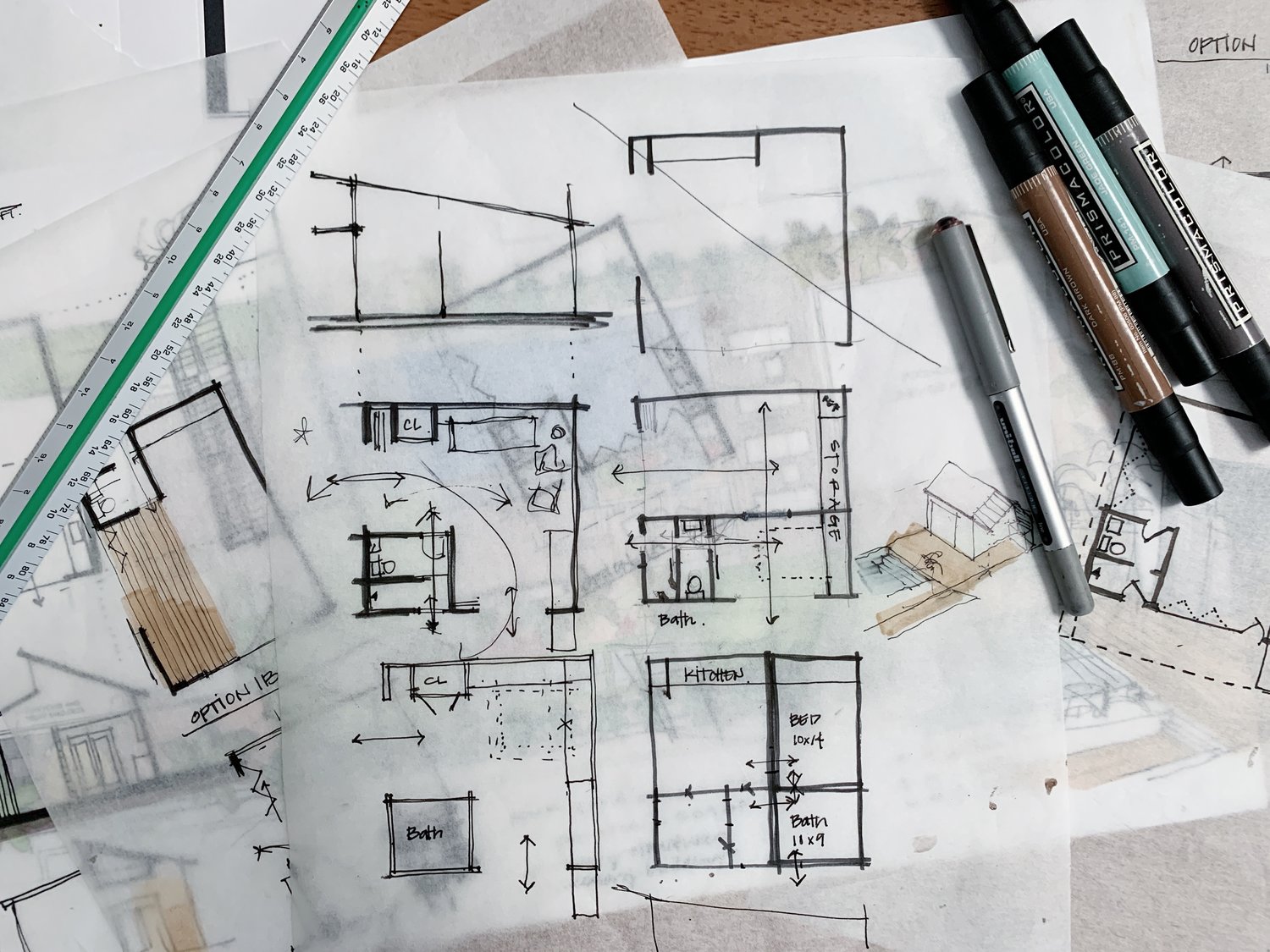Architect Portfolio Tips for Making an Impact in the Industry
Architect Portfolio Tips for Making an Impact in the Industry
Blog Article
Recognizing the Diverse Profession Paths Available for Aspiring Architect
As an ambitious Architect, you have a world of job paths awaiting you. Each path offers unique challenges and possibilities to use your creativity and technical know-how. Whether you're drawn to typical architecture or the nuances of lasting style, there's a particular niche that lines up with your passions. Comprehending these diverse alternatives can shape your specialist trip, but which instructions will you select to check out initially?
Typical Architecture: Designing Buildings and Structures
Traditional style concentrates on making buildings and frameworks that mix capability with aesthetic allure. As you explore this area, you'll value the elaborate balance in between kind and function. You'll learn to draw motivation from historic styles, including aspects like symmetry, materials, and workmanship. Your styles can mirror social heritage, showcasing local traditions while satisfying contemporary demands.
You'll develop skills in composing, model-making, and site analysis, allowing you to visualize and communicate your concepts effectively. Involving with customers, you'll need to comprehend their vision and translate it into possible styles.
In addition, developing codes and sustainability practices are crucial in your work, guaranteeing your structures are risk-free and eco-friendly. As you expand in your job, you'll locate opportunities in residential, business, or even repair tasks, each offering unique obstacles. Accepting conventional design leads the way for a fulfilling job that pays tribute to the past while forming the future.
Urban Preparation: Shaping Areas and Public Spaces
As a hopeful Architect, you can play an essential duty as a metropolitan coordinator, changing exactly how communities connect and function. By using community interaction approaches, you'll ensure that citizens have a voice in forming their setting. Plus, integrating sustainable design concepts will assist develop spaces that not just fulfill today's requirements however additionally shield the future.
Duty of Urban Planners
While many may believe of designers as the single visionaries behind buildings, urban planners play a necessary duty in forming the wider landscape of neighborhoods and public areas. By teaming up with different stakeholders, you'll help create parks, transportation systems, and domestic areas that advertise social interaction and ease of access. Your experience in spatial style and area characteristics permits you to picture future growth while maintaining social heritage.
Area Involvement Approaches
Efficient area involvement approaches are important for metropolitan coordinators to ensure that the voices of homeowners are heard and valued in the preparation procedure. To cultivate purposeful dialogue, you must focus on open forums and workshops where area participants can express their concepts and concerns. Use studies and social media to get to a wider audience, ensuring varied perspectives are consisted of. Teaming up with local companies can enhance count on and facilitate deeper connections. It's important to offer clear info concerning decision-making processes and suggested jobs, allowing residents to really feel informed and empowered. By actively incorporating and listening comments, you'll create areas that reflect the neighborhood's demands, inevitably causing more effective and sustainable city settings. Accept transparency and continuous dialogue for enduring impact.
Sustainable Style Concepts
When making metropolitan spaces, incorporating sustainable style concepts is vital for creating environments that thrive both environmentally and socially. You need to start by focusing on power effectiveness, utilizing materials that decrease waste and advertise recycling. Think about integrating eco-friendly rooms, like parks and yards, to boost biodiversity and enhance air top quality. Promoting walkability and public transportation can reduce dependence on autos, cultivating a healthier neighborhood.
Designing with water conservation in mind is also essential-- believe about rain gardens and absorptive surface areas to manage stormwater. Including community members during the planning procedure warranties that the rooms you develop satisfy their demands and urge social communication. By accepting these principles, you'll add to vivid, sustainable city landscapes that profit every person.

Landscape Architecture: Creating Sustainable Outdoor Settings
As you check out landscape design, you'll uncover vital layout concepts that develop stunning and practical outdoor rooms. Sustainable practices play an essential role in making certain these settings thrive while lessening ecological influence. Plus, you'll discover a selection of occupation opportunities that permit you to make a genuine distinction in how people connect with nature.
Design Principles in Landscape
Understanding layout concepts in landscape architecture is essential for producing sustainable outside settings that harmonize with nature. You'll require to contemplate elements like equilibrium, proportion, and scale to guarantee your styles really feel cohesive and inviting. Including native plants not only improves biodiversity but additionally lowers water use, making your landscape durable. Think concerning the flow of area and how individuals engage with it; pathways and seating locations must welcome exploration and relaxation. In addition, focus on seasonal adjustments, making with products that enhance the environments year-round (Architect). By prioritizing sustainability and visual appeals, you can create outdoor spaces that enhance the neighborhood and advertise health. Welcoming these principles will certainly establish a strong structure for your profession in landscape architecture.
Lasting Practices Summary
Lasting practices in landscape style not only focus on aesthetics yet additionally prioritize eco-friendly wellness and resource preservation. You can make spaces that promote dirt health, such as making use of organic products and practicing permaculture principles. Inevitably, these techniques assure your styles benefit both individuals and the environment for years to come.
Career Opportunities Expedition
With a strong foundation in lasting techniques, landscape style uses a selection of occupation courses that permit you to make a meaningful effect on the environment. Urban organizers commonly team up with landscape engineers to develop green areas in urban setups, improving city livability. If you're passionate concerning education and learning, think about ending up being a landscape design educator, inspiring future generations.
Sustainable Style: Concentrating On Eco-Friendly Practices
As you explore your profession in design, embracing environment-friendly practices can establish you apart in a competitive field. Sustainable layout concentrates on creating buildings that decrease ecological influence while boosting owner health. By including sustainable products, energy-efficient systems, and lasting building strategies, you'll add to a greener future.
Begin by obtaining knowledge of environment-friendly certifications like LEED or BREEAM, which can bolster your qualifications. Consider exactly how all-natural light, ventilation, and thermal efficiency can enhance style. Collaborate with designers and ecological consultants to innovate services that decrease waste and save sources.
Do not fail to remember the relevance of neighborhood participation-- interesting regional stakeholders can influence styles that integrate with the environment. As clients significantly prioritize sustainability, your competence in environmentally friendly techniques will certainly not just attract tasks yet likewise accomplish your interest for liable style. Accept this critical facet of the career, and watch your profession thrive.
Historic Conservation: Protecting and Restoring Cultural Heritage
While you begin on your building trip, consider the crucial duty of historic preservation in maintaining our social heritage. This field concentrates on the defense and repair of significant structures, sites, and structures basics that inform the tales of our past. By taking part in historical conservation, you'll aid secure the architectural heritage that forms area identity.
As a historical preservation Architect, you'll examine historic relevance and evaluate the problem of structures. You'll function closely with historians and preservationists to guarantee genuine remediation strategies are used. This job course permits you to blend creative thinking with research study, enabling you to design solutions that appreciate initial materials and workmanship.
Your work not just adds to sustainability by recycling existing buildings however also promotes a sense of satisfaction within communities. Accepting this path will help you come to be a guardian of background, protecting the tales and aesthetics that enhance our lives.
Interior Design: Enhancing Indoor Spaces
Historic preservation and indoor design both share a commitment to enhancing the developed atmosphere, but they concentrate on various aspects. While historic more info here preservation emphasizes keeping a framework's cultural and historical worth, interior architecture zeroes in on maximizing interior rooms for performance and looks.
As a hopeful Architect, you'll locate that indoor architecture enables you to blend creative thinking with technological skills. You'll design areas that not just look great yet also promote convenience and efficiency. This field entails understanding exactly how light, color, and products interact within an area, impacting mood and functionality.
You'll work with different jobs, from domestic homes to commercial workplaces, guaranteeing that each environment fulfills the requirements of its occupants. By focusing on customer experience, you can change interiors right into motivating and functional rooms, making a substantial influence on how individuals communicate with their environments. Embrace the opportunity to improve interior atmospheres and form the means individuals live and work.
Industrial Layout: Combining Functionality With Visual Appeals
Industrial style plays a vital function in creating products that perfectly blend appearances with functionality, guaranteeing that what you use day-to-day is not only aesthetically attractive however likewise useful. As an ambitious Architect, you could engage on your own in this area, concentrating on making everything from furniture to consumer electronic devices. Your work entails understanding user demands, materials, and making processes, allowing you to produce innovative options that boost daily experiences.
In commercial style, you'll typically team up with online marketers, manufacturers, and designers, making certain that your styles are not just gorgeous yet also viable. You'll find out to balance type and feature, prioritizing use without compromising style. By sharpening your abilities in sketching, 3D modeling, and prototyping, you'll be well-appointed to bring your ideas to life. This profession course uses a dynamic setting where creative thinking meets practicality, making it a gratifying selection for engineers thinking about shaping the products of tomorrow.
Regularly Asked Inquiries
What Educational Certifications Do I Need to Come To Be an Engineer?
To become an architect, you'll need a professional level in design, generally a Bachelor's or Master's. Furthermore, you'll need to complete an internship and pass the Architect Registration Examination to exercise legally.
Exist Qualification Needs for Various Architectural Profession Paths?
Yes, there're qualification demands for numerous building courses. Architect. You'll require to pass tests, full internships, and in some cases go after specialized training, depending on your picked emphasis, like landscape architecture, urban style, or historical preservation
What Software Abilities Are Important for Engineers Today?

How Can I Gain Practical Experience While Examining Style?
You can obtain practical experience by interning at building companies, participating in style competitions, volunteering for area tasks, or working together with classmates on real-world assignments. These chances boost your skills and build important connections in the market.
What Task Opportunities Exist Outdoors Standard Style Firms?
You can check out numerous job chances outside conventional style companies, like metropolitan preparation, interior style, landscape design, building and construction monitoring, genuine estate advancement, and even functions in sustainability consulting. Each deals one-of-a-kind challenges and rewards.
Whether you're drawn to typical architecture or the nuances of sustainable style, there's a specific niche that aligns with your passions.When developing metropolitan areas, incorporating sustainable style concepts is important for creating environments that click to investigate flourish both environmentally and socially.As you check out landscape style, you'll discover necessary design concepts that produce stunning and practical outdoor spaces.Comprehending design concepts in landscape design is vital for developing sustainable outdoor atmospheres that balance with nature.In industrial layout, you'll commonly team up with online marketers, suppliers, and designers, making sure that your layouts are not only gorgeous however also feasible.
Report this page